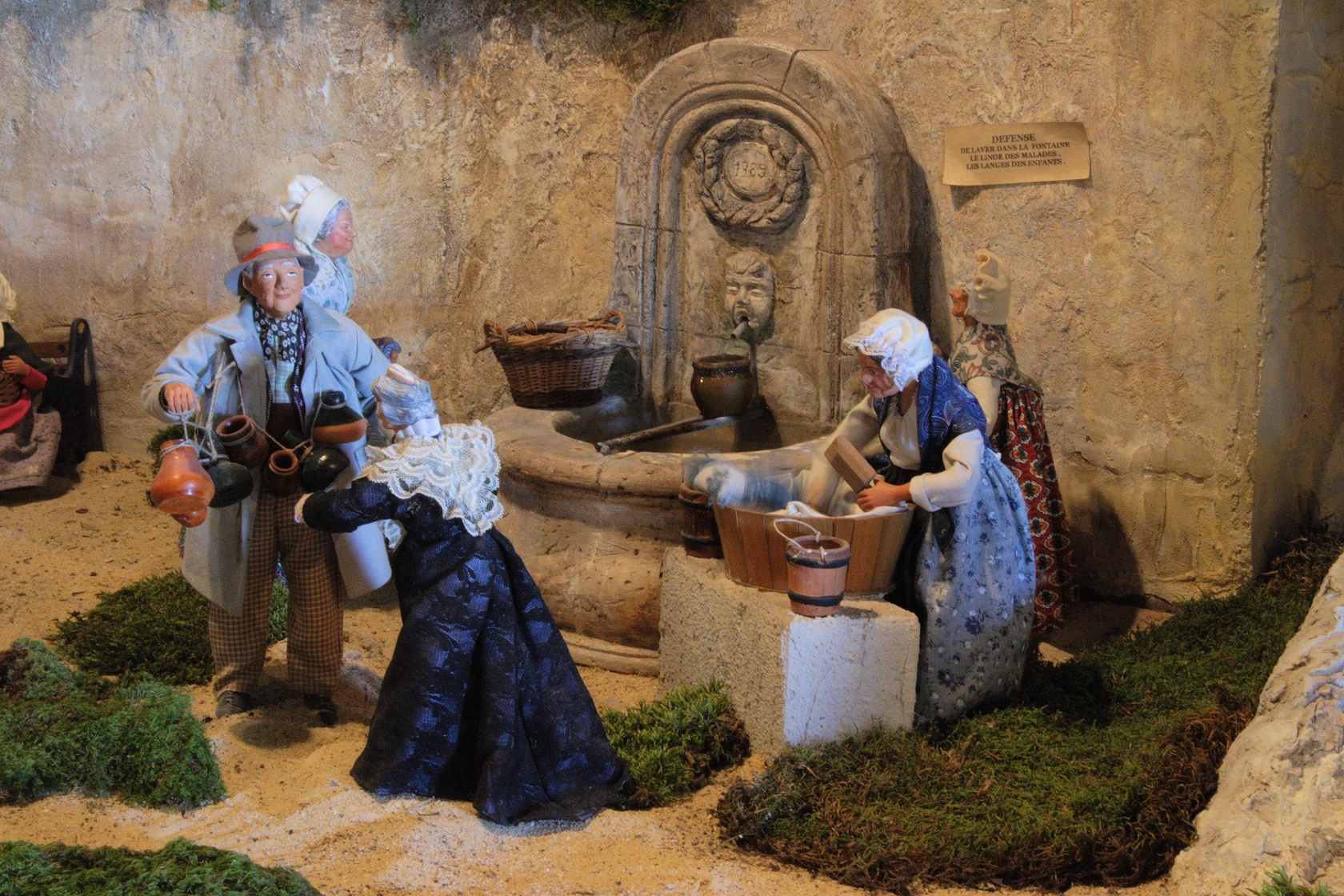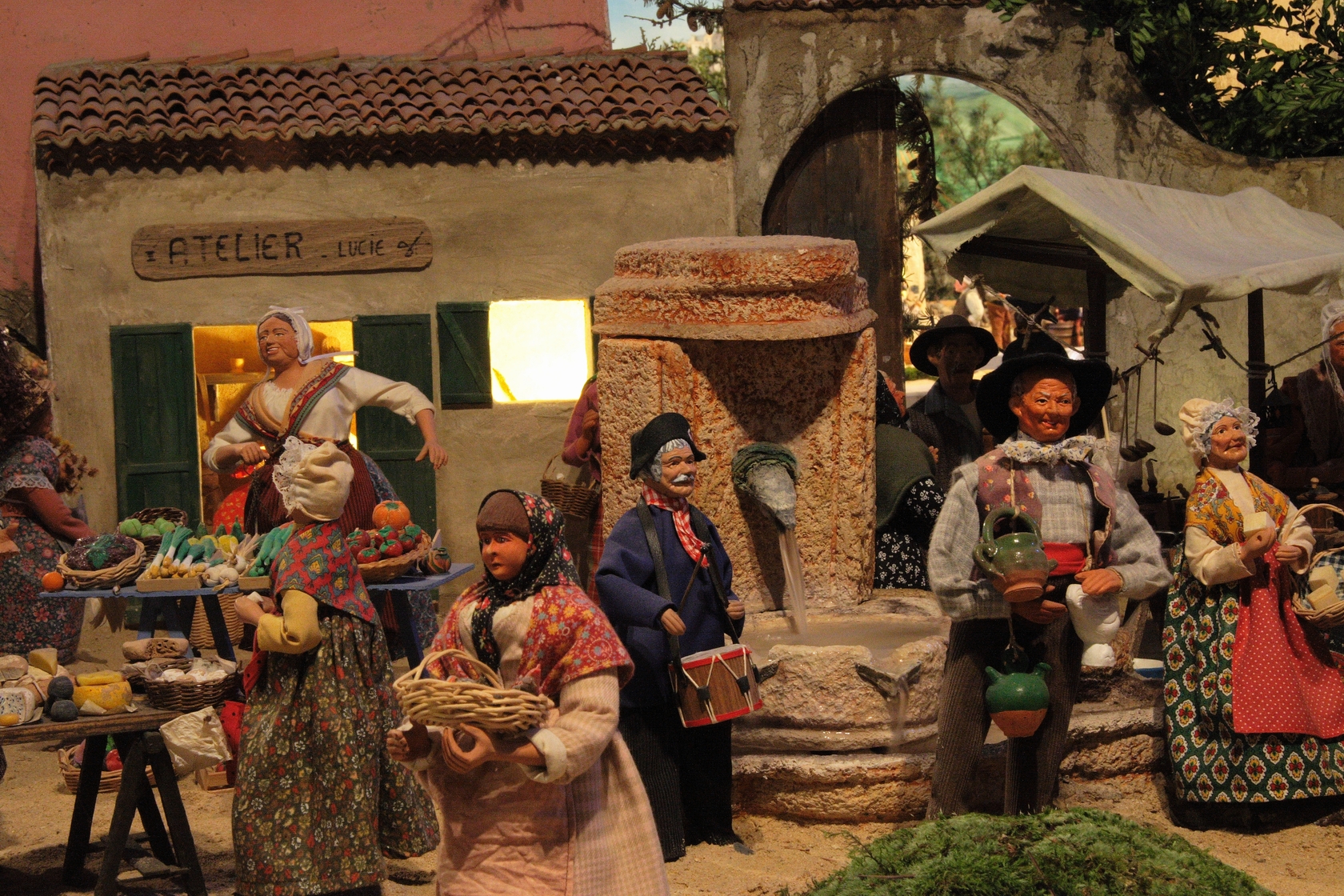Origin of figurines
 The staging of the Nativity has its origins in the Middle Ages. At that time, plays were very popular, but their content was based on pagan traditions.
The staging of the Nativity has its origins in the Middle Ages. At that time, plays were very popular, but their content was based on pagan traditions.
The church contrasted these stage representations with plays whose main theme was the birth of the Savior. These living nativity scenes became widespread, the characters were played by the people of the village, the animals were real. Gradually, the actors were replaced by characters made of wood, cardboard, wax, etc. The first nativity scenes resembling those we know appeared in churches in the 15th century.
With the French Revolution, which led to the ban on religious festivals, crèches gradually entered homes. Gradually, they draw inspiration from everyday life by creating characters linked to local life. In Provence, these characters in the name of Santons “SANTOUN” in Provençal mean Little Saint.
From the 19th century, the Provençal nativity scene became the most popular. She ends up representing all the trades of the time in local costume.
Among these characters, whose personal story is told in the pastorals, we must mention the child Jesus, the Blessed Virgin, Saint Joseph, the ox and the donkey, the Angel, the Three Wise Men, the shepherds, the ravished ( the village idiot), the drummer, the sinner, the water carrier, the miller, the baker, the basket weaver, the grinder, the washerwoman etc.
All these professions, all these characters you will find staged in the miniature Provençal village.
